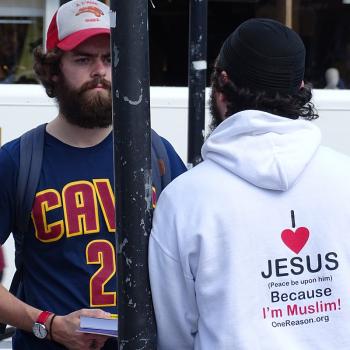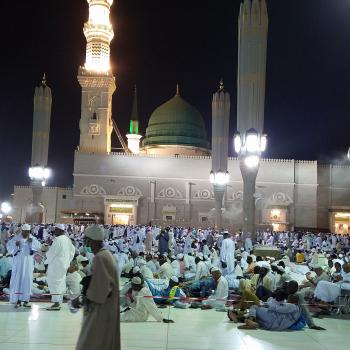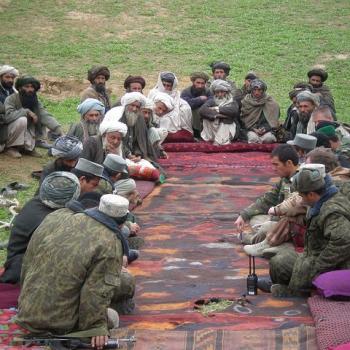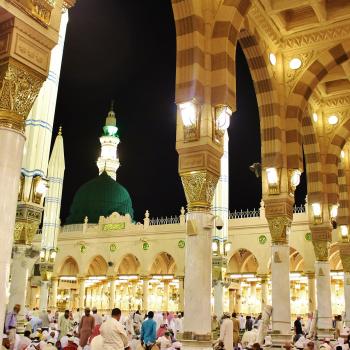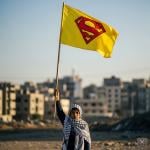 The reported persecution of Christians in Muslim-majority countries, especially in the land ruled by Daesh, or ISIS, as it is known in the west is troublesome. It is often claimed that their actions are in accordance with the Sharia. But is it really guided by Islamic principles, or the Sunnah of Prophet Muhammad?
The reported persecution of Christians in Muslim-majority countries, especially in the land ruled by Daesh, or ISIS, as it is known in the west is troublesome. It is often claimed that their actions are in accordance with the Sharia. But is it really guided by Islamic principles, or the Sunnah of Prophet Muhammad?
If the Muslims claim to be the followers of Prophet Muhammad, they need to ask themselves a simple question in line with our Christian cousins. When dealt with situations that were not necessarily found in the Bible to guide them in the present day and age, they often ask:
WWJD- What would Jesus do?
If the life and Sunnah of Prophet Muhammad, PBUH, is indeed a guide for the Muslims, we should be asking the same question:
WWMD-What would Muhammad do?
Except in the case of treatment of the religious minority, Muslims do not have to assume or guess what would Muhammad do. He had laid out clearly how the minorities should be treated. The covenant of Prophet Muhammad with the monks of St. Catherine Monastery in the foothill of Mount Sinai is a prime example of how he viewed the responsibilities of Islamic rulers towards religious minorities (in this case the Christians).
St. Catherine Monastery:
This is a Greek orthodox monastery, located beneath the Mount of Decalogue, where Jews, Christians and Muslims believe God spoke to Prophet Moses from the burning bushes, though there is some debate between the exact location( Mount Sinai vs Mount Horeb-some believing, such as Protestant reformer John Calvin that these are two names of the same mountain). The monastery has been visited by holy figures through the past seventeen hundred centuries, including Prophet Muhammad who knew the fathers/monastery leadership at the monastery. The monastery maintains a website and the following description is from its website.[1]
“This is the oldest continuously inhabited Christian monastery, with a history that can be traced back over seventeen centuries. The monastery predates the divisions of the Christian world, its origins extending to late antiquity. The monastery has never been destroyed in all its history, and thus it can be said to have preserved intact the distinctive qualities of its Greek and Roman heritage. Members of other Christian confessions have honoured the monastery, coming as pilgrims to this holy place.”
In the second year of the Hijra, (623 C.E), a delegation from the monastery requested a letter of protection from Prophet Muhammad. He did that in the form of a document that was scribed by his cousin and son-in-law, Ali, and placed his hand on it as a seal. Others believe the timing was during the 4th year of Hijra(625 C.E.) or during the year of delegations around year 630 C.E. The Letter of Protection is known as the Ahtiname, commonly known as Covenant of Muhammad.
The fathers of St. Catherine’s Monastery (originally known as Mount Sinai Monastery) acknowledge that this covenant has been instrumental in protecting the monastery and its monks.
“The continuous existence of the monastery during fourteen centuries of Islamic rule is a sign of the respect given to this Letter of Protection, and the principles of peace and cooperation that it enshrines. In AD 1517, Sultan Selim I confirmed the monastery’s prerogatives, but took the original letter of protection for safekeeping to the royal treasury in Constantinople. At the same time, he gave the monastery certified copies of this document, each depicting the handprint of Mohammed in token of his having touched the original.”[2]
The Text of Prophet Muhammad’s Covenant
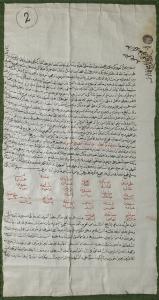
Here are some excerpts from the covenant that have served as a model for over 1400 years. The covenant speaks for itself, so I will limit my commentary to the bare minimum.
“This is a letter which was issued by Muhammad, Ibn Abdullah, the Messenger, the Prophet, the Faithful, who is sent to all the people as a trust on the part of God to all His creatures, that they may have no plea against God hereafter. Verily God is the Mighty, the Wise.”
“This letter is directed to the embracers of Islam, as a covenant given to the followers of Jesus (of) Nazarene in the East and West, the far and near, the Arabs and foreigners, the known and the unknown.”
Protect their Churches: (A memo ISIS apparently never got)
“No one is allowed to plunder these Christians, or destroy or spoil any of their churches, or houses of worship, or take any of the things contained within these houses and bring it to the houses of Islam. And he who takes away anything therefrom, will be one who has corrupted the oath of God, and, in truth, disobeyed His Messenger.”
Freedom to practice their religion:
“They must not give anything of their income but that which pleases them—they must not be offended, or disturbed, or coerced or compelled. Their judges should not be changed or prevented from accomplishing their offices, nor the monks disturbed in exercising their religious order.”
No forced marriages/Interfaith marriages:
“Should any Christian woman be married to a Muslim, such marriage must not take place except after her consent, and she must not be prevented from going to her church for prayer. Their churches must be honored and they must not be withheld from building churches or repairing convents.”
“Do no dispute or argue with them, but deal according to the verse recorded in the Quran, to wit: ‘Do not dispute or argue with the People of the Book but in that which is best’ [29:46].”
Muhammad’s Covenant-NOT just for his time:
And in case someone would use the excuse that these protections and promises were for his time only, Prophet Muhammad had the foresight to ensure everyone knew this was applicable for all times.
“It is positively incumbent upon every one of the Islam nation not to contradict or disobey this oath until the Day of Resurrection and the end of the world.”
So when it comes to protecting religious minorities, including Christians, the question should not be ‘What would Muhammad do’.
It should be: ‘What did Muhammad do’.
He erased the guessing game. The question is whether Muslims are aware of his Sunnah (and in this case the covenant), and willing to follow his example?
This book by John Andrew Morrow is a detailed review of the Covenants of Prophet Muhammad with the Christian World.
Never miss another post. Sign up for my blog newsletter.
[1] http://www.sinaimonastery.com/index.php/en/
[2] http://www.sinaimonastery.com/index.php/en/library/patent-of-mohammed



